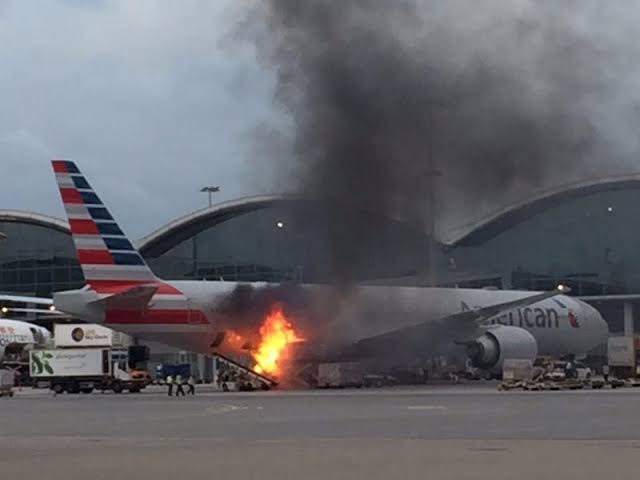American Airlines Flight 1006 Emergency: Engine Fire Forces Evacuation at Denver International Airport
American Airlines Flight 1006 Emergency: Engine Fire Forces Evacuation at Denver International Airport
Critical In-Flight Emergency Ends in Safe Evacuation
On March 13, 2025, American Airlines Flight 1006, a Boeing 737-800, was forced to execute an emergency landing at Denver International Airport after one of its engines caught fire during taxiing. The incident prompted a swift evacuation of all 172 passengers and six crew members, underscoring ongoing concerns over aircraft safety and engine reliability.
Flight 1006 had originally departed from Colorado Springs Airport at 4:37 p.m. local time, en route to Dallas-Fort Worth International Airport (DFW). Roughly 20 minutes into the flight, the crew detected abnormal engine vibrations, which quickly escalated into a potential safety hazard.
Responding with immediate precision, the flight crew diverted the aircraft to Denver International Airport as a precautionary measure. This rapid decision-making proved crucial in ensuring the safe descent and landing of the aircraft.
The Boeing 737-800 touched down safely at Denver at 5:15 p.m., following emergency protocols. However, as the aircraft taxied toward Gate C38, thick black smoke erupted from one of the engines, signaling a serious mechanical failure. Within seconds, flames engulfed part of the engine, prompting an urgent evacuation order.
With smoke billowing and fire spreading, the flight crew initiated emergency procedures, deploying evacuation slides while instructing passengers to exit onto the wings for rapid disembarkation.
Key Details from the Evacuation:
- 172 passengers and six crew members exited via emergency slides.
- Many passengers stood on the aircraft’s wings to distance themselves from the flames.
- The Denver Fire Department responded within minutes, extinguishing the fire before it could spread further.
- Twelve individuals sustained minor injuries during the evacuation and were treated at nearby hospitals.
Passengers onboard described harrowing moments as they rushed to exit the aircraft.
"We saw smoke, and within seconds, the crew was yelling for us to evacuate. The adrenaline kicked in. We slid down as fast as possible," said one passenger.
Another traveler, standing on the wing as fire crews arrived, recalled:
"It felt unreal. One moment we were taxiing, the next we were outside, staring at a burning engine."
Investigating the Cause: FAA Launches Full Inquiry
The Federal Aviation Administration (FAA) immediately opened an investigation into the engine fire, aiming to determine:
- Whether mechanical failure, foreign object ingestion, or a fuel system malfunction caused the fire.
- If recent maintenance checks on the aircraft revealed any prior issues.
- Potential links to broader aviation safety concerns affecting similar Boeing models.
The National Transportation Safety Board (NTSB) has also been briefed, and preliminary reports are expected within weeks.
American Airlines Responds: Safety Takes Priority
In an official statement, American Airlines reaffirmed its commitment to passenger and crew safety, stating:
"We commend our crew for their swift response and extend our gratitude to Denver’s emergency teams. Passenger safety remains our utmost priority, and we are working closely with federal agencies to understand the cause of this incident."
Broader Aviation Concerns: A Pattern of Safety Incidents?
This latest emergency adds to a growing list of recent aviation safety concerns, including:
- Mechanical failures and midair incidents reported across major carriers.
- FAA and NTSB scrutiny over aircraft maintenance standards.
- Ongoing concerns regarding Boeing’s 737-800 models, which have faced multiple safety checks in recent years.
While all passengers survived Flight 1006’s emergency, the incident raises serious questions about engine reliability, aviation safety protocols, and emergency preparedness. As investigations unfold, the aviation industry faces renewed pressure to enhance aircraft inspections, improve in-flight safety systems, and bolster crew training for emergency scenarios.
As authorities probe the cause of the engine fire, American Airlines faces renewed scrutiny over maintenance and fleet safety. For travelers, incidents like these serve as stark reminders of the unpredictable nature of air travel—and the critical role that preparedness plays in saving lives.
Stay tuned for updates as the FAA releases its findings on what caused the American Airlines Flight 1006 engine fire at Denver International Airport.




Comments
Post a Comment